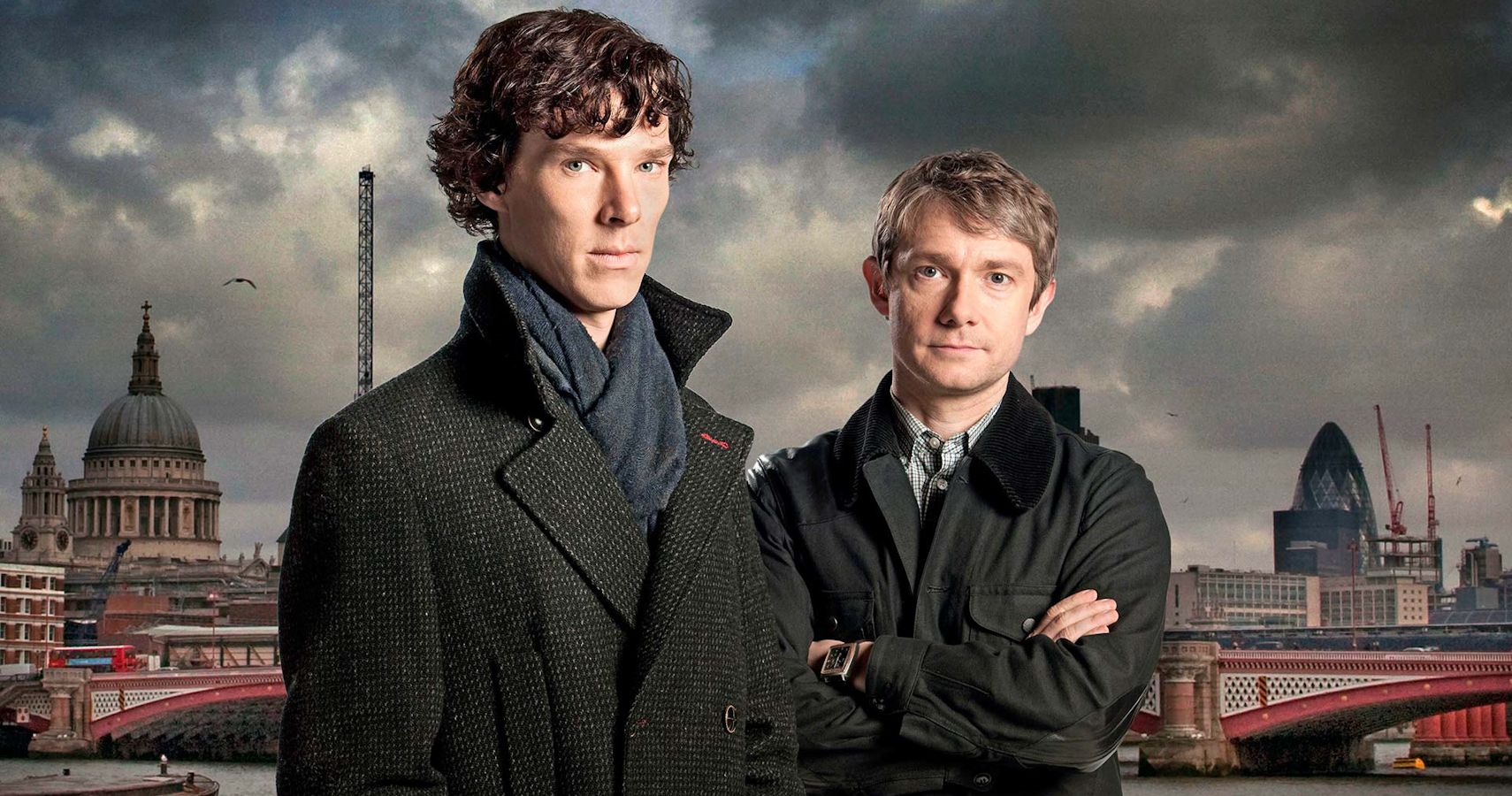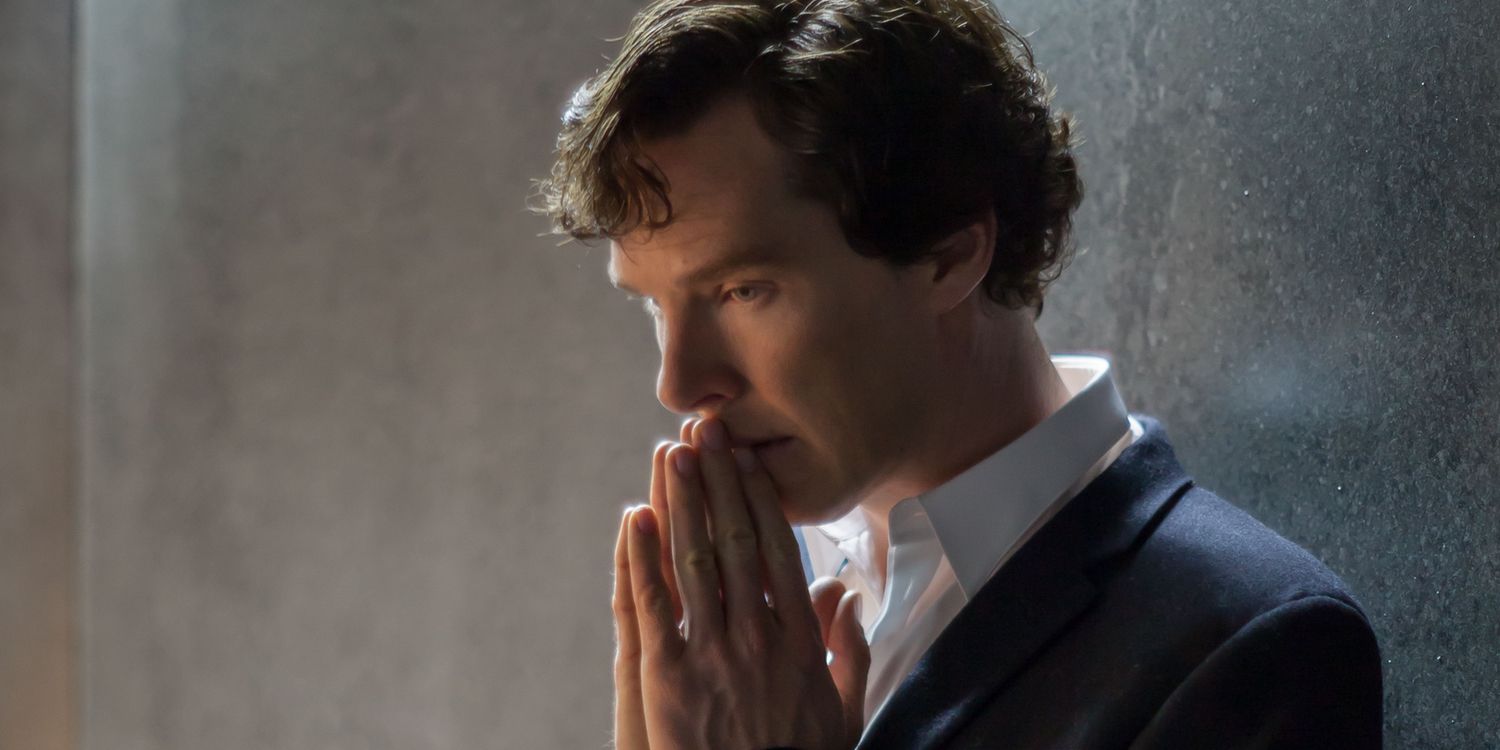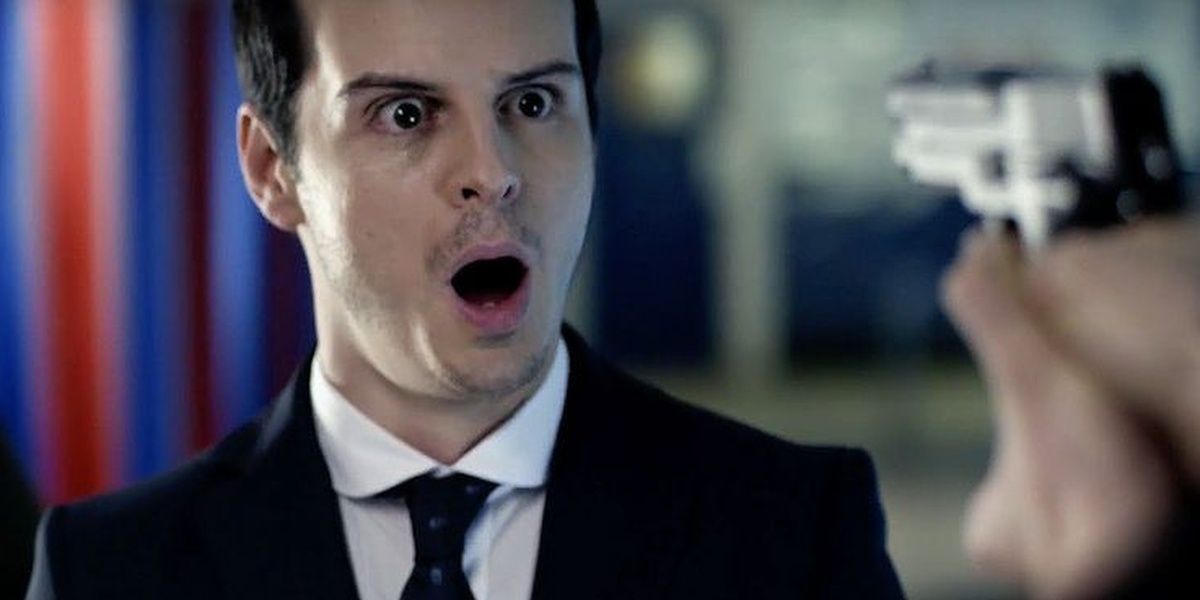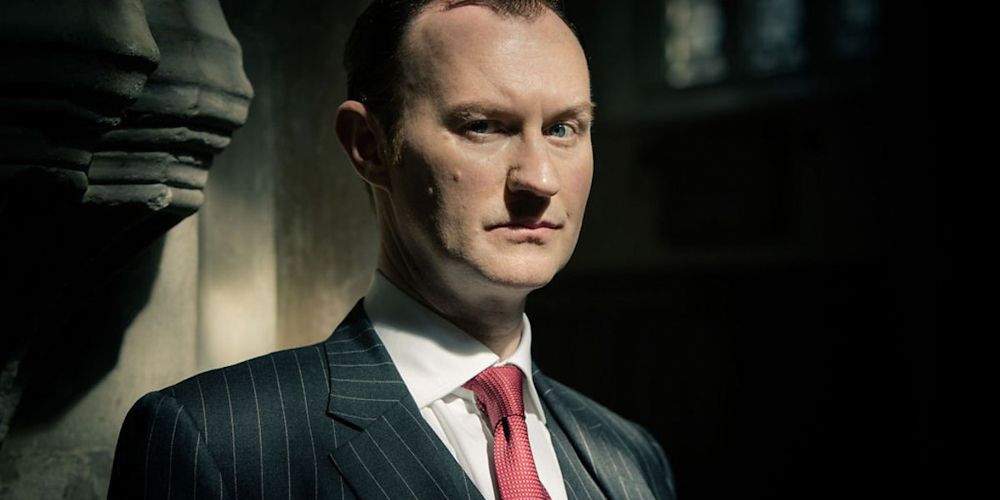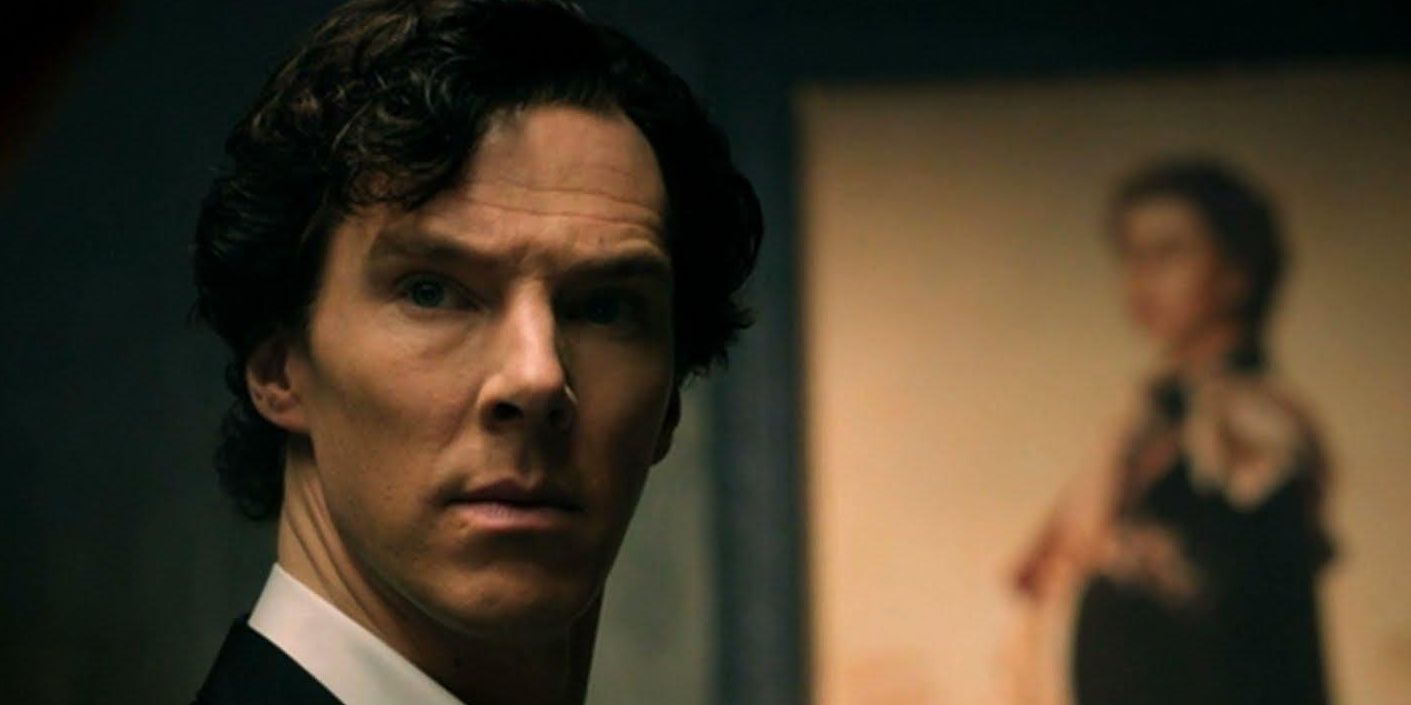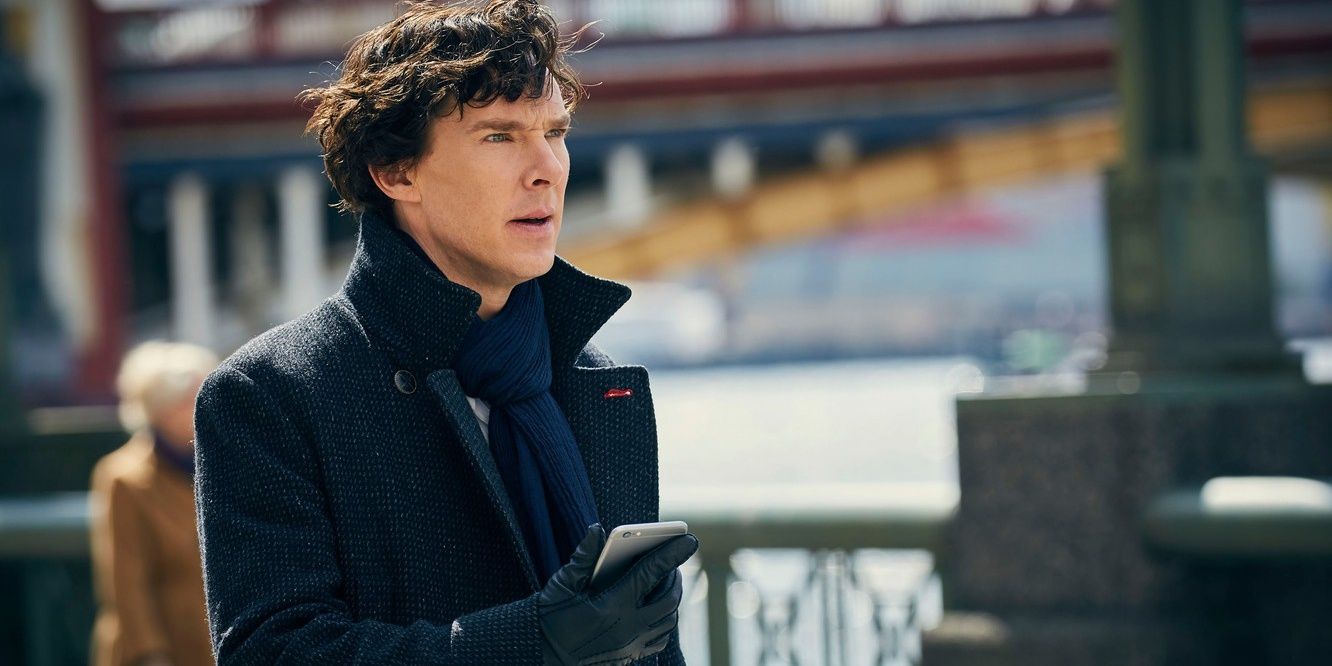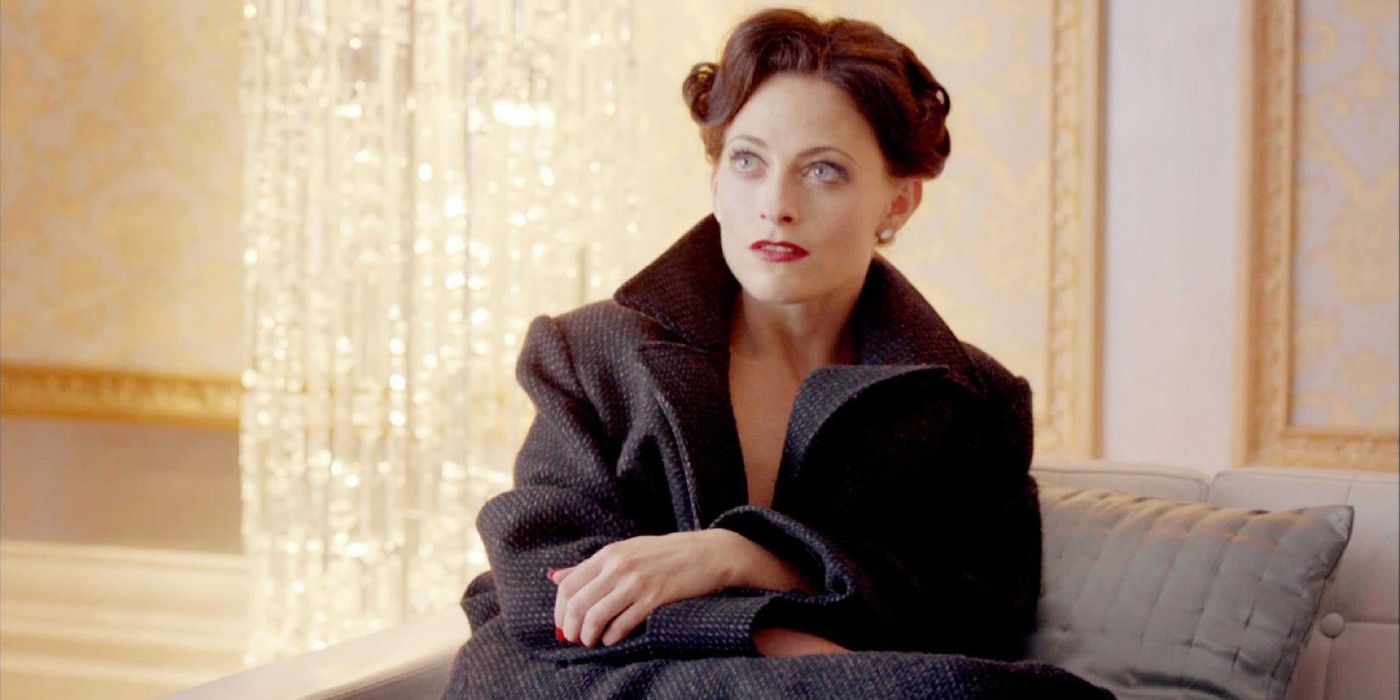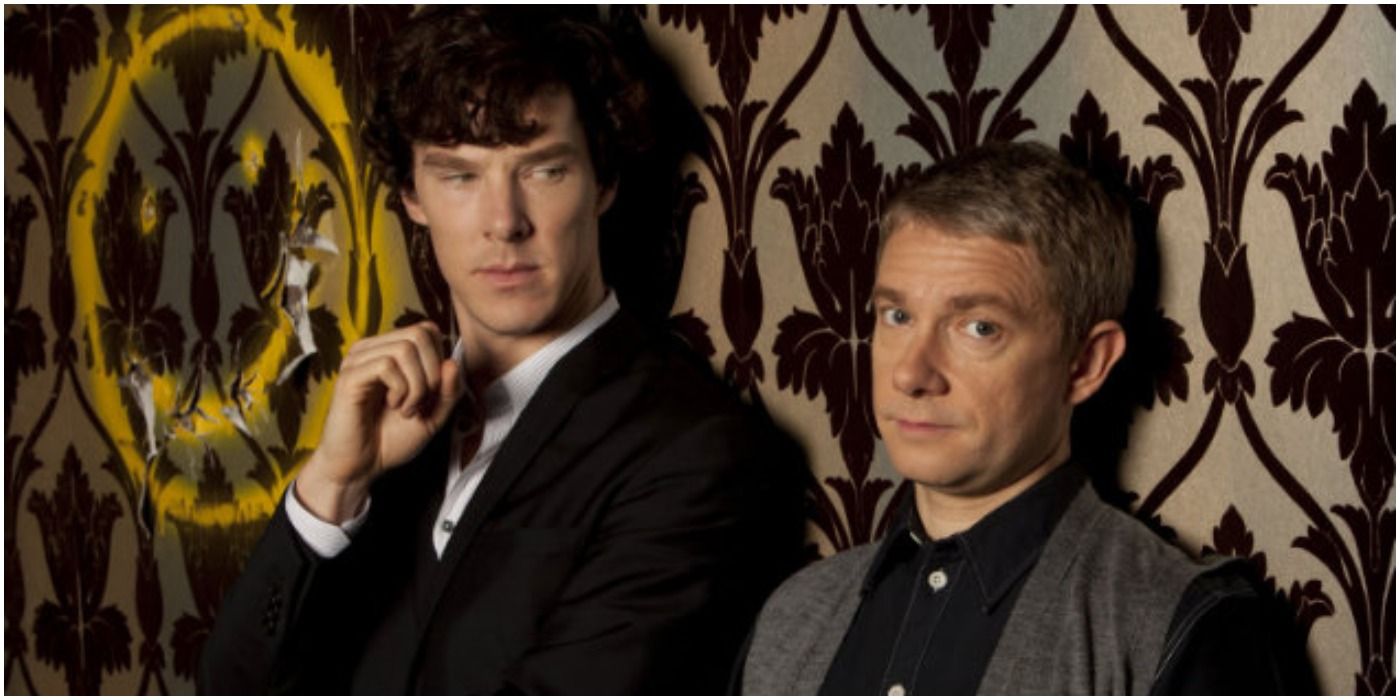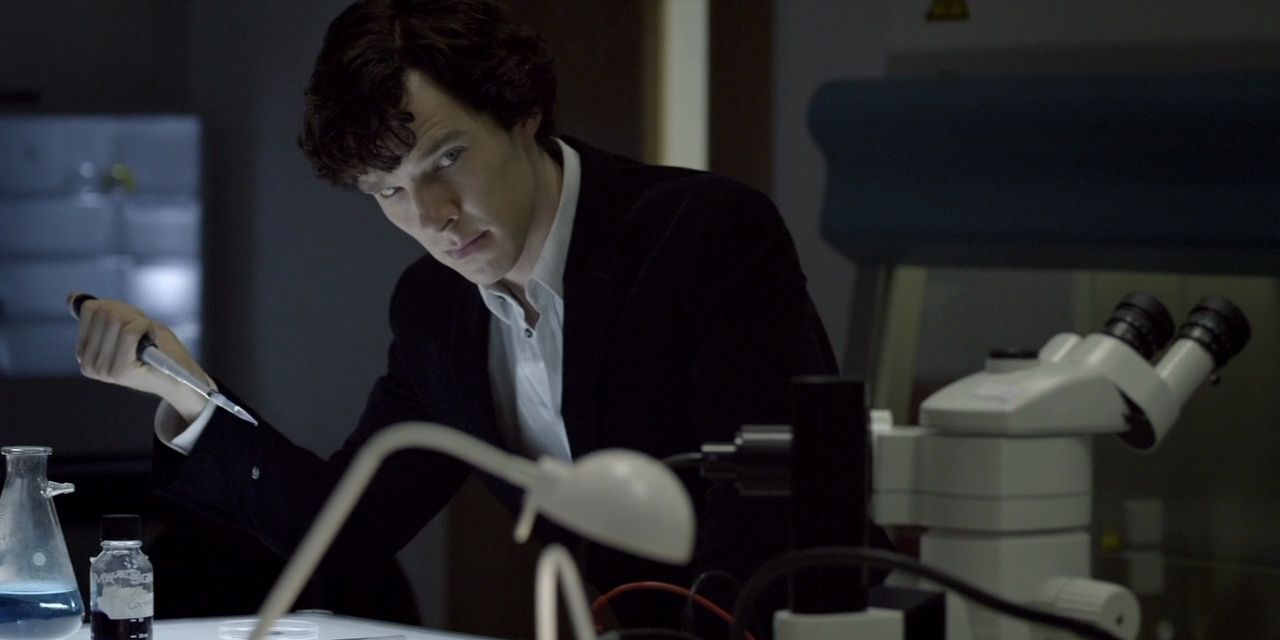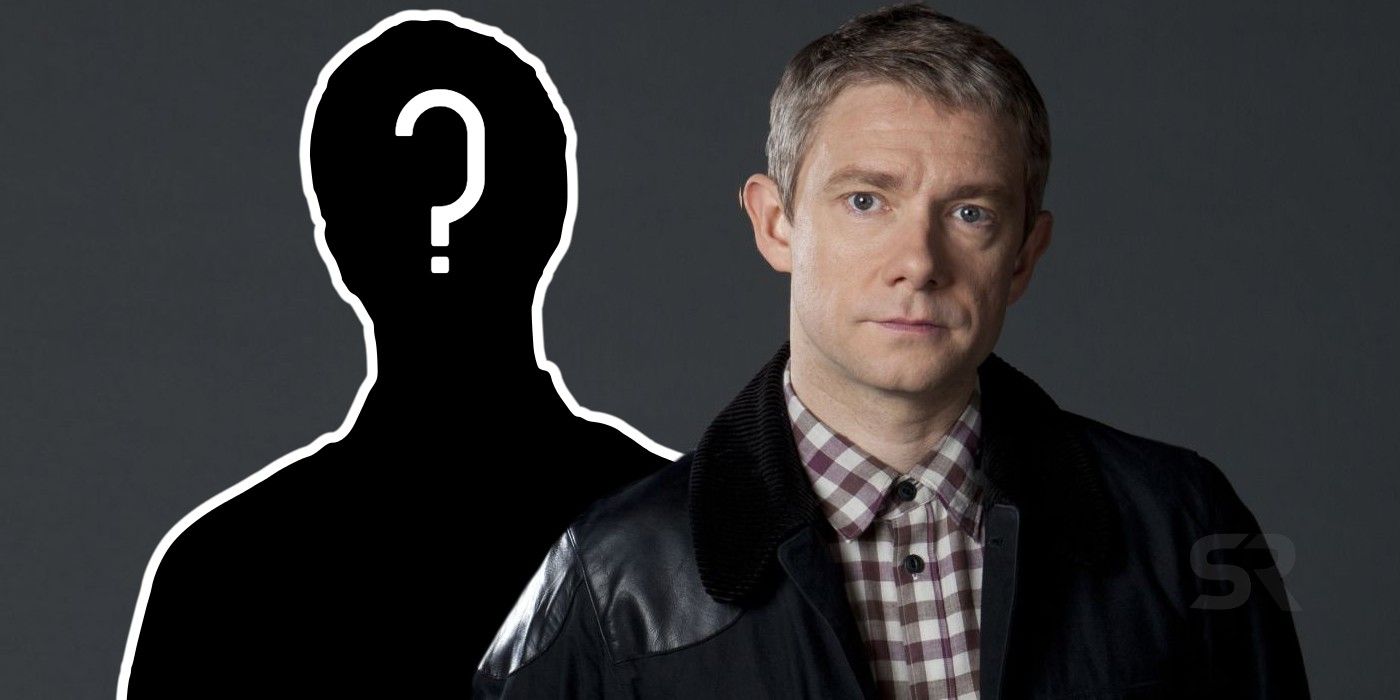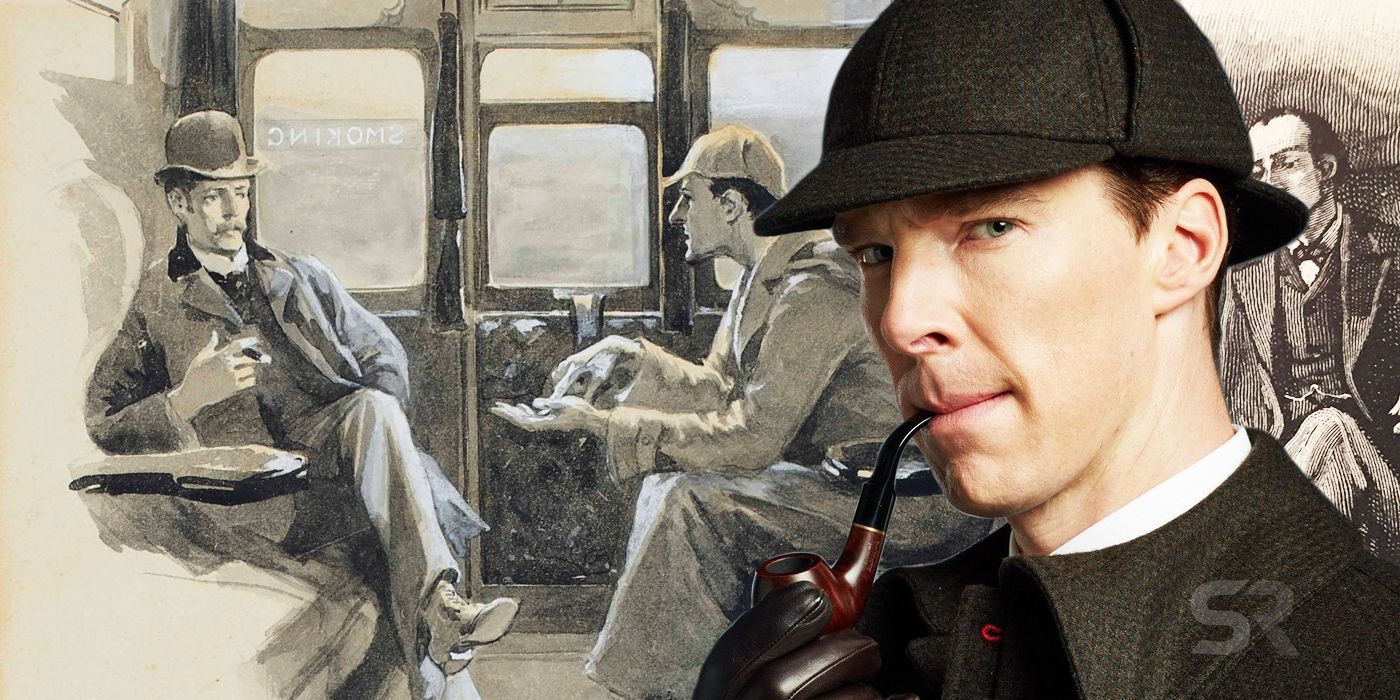Whether Sherlock will have a fifth season remains a mystery (something about Benedict Cumberbatch being busy) but the show remains a treasure to enjoy again and again. Like many of the mysteries featured in the BBC series, each episode is a puzzle of references, and especially to the books the show is based on.
The works of Sir Arthur Conan Doyle inform the show in almost every way, but well-hidden nods to obvious and obscure parts of the classic books abound. Here are ten times the Sherlock series referenced the original Sherlock Holmes books.
Harpoon Gun
The opening episode of season two, "The Hounds of Baskerville," references what might be the character's most famous story in the title. But in the opening scene, it drops a visual reference to one much less obvious.
Sherlock comes into his apartment covered in blood and holding a harpoon gun, looking like he just walked out of a Jaws movie, and says "That was tedious!" This is a reference to The Adventure of Black Peter, in which the victim in that story is killed by a harpoon gun.
Beep, Beep
"The Great Game" ends with Sherlock's first proper encounter with his arch-nemesis Moriarty (brilliantly played the Hot Priest himself, Andrew Scott).
Moriarty challenges Sherlock with a series of puzzles that keep him guessing (and running). The five beeps Sherlock hears on his phone before each puzzle reference a short story called "Five Orange Pips." The story, said to be one of Sir Arthur Conan Doyle's favorites, was only one of two in the original run in which Holmes' client ended up dying.
Crash Diet
Another popular antagonist for Sherlock Holmes in any incarnation is his brother, Mycroft. In the BBC version, Mark Gatiss (co-creator of the series and Doctor Who writer) plays the secretive member of the Cabinet Office. In the books and stories, Mycroft is quite plainly overweight.
Gatiss is as thin as Benedict Cumberbatch, however, so the show plays some games with this discrepancy by always having Mycroft on some kind of diet. Throughout the show, he's battling his weight (and always winning).
'Rache'
"A Study In Scarlet" is likely the other most popular Sherlock Holmes story, and formed the basis of the first episode of the series, "A Study In Pink." Like a lot of aspects of the source material, the television series inverts the original. Such is the case with the meaning behind the word 'Rache.'
Holmes finds this scrawled next to a body and assumes it's the German word for revenge. It turns out the victim actually meant to write 'Rachel.' In the book, it's the opposite; Holmes works out that 'rache' is the intended phrase.
Colossal Schemes
Holmes comes back from the dead it seems in season three of the series and brings a pretty well-buried reference to the original stories with him. In "The Empty Hearse," Mycroft says that Sherlock stopped the "colossal" scheme of Baron Maupertius, who had been the last of Moriarty's agents.
This is a reference to the short story "The Adventure of the Reigate Squire," in which John Watson makes a throwaway reference to Holmes again stopping the colossal scheme of Baron Maupertius.
Vatican Cameos
In season two of the series, Holmes encounters one of his greatest challenges in Irene Adler, who debuted in the story "A Scandal In Bohemia." In the course of his intellectual sparing with Adler, there is a reference to Vatican cameos. This isn't any background appearance by members of the Roman Catholic church, though. In fact, the meaning behind the term is quite opaque.
The only reference to it in the original stories by Doyle occurs in "The Hound of the Baskervilles," which describes it as a 'little affair.'
The Diogenes Club
Episode two of the second season, “The Reichenbach Fall,” introduces a major element of the book and stories. The Diogenes Club in London appears through the original run by Sir Arthur Conan Doyle and is actually where Mycroft Holmes is first introduced (who actually co-founded the club).
References in this episode beyond the club itself include some of its clientele. One of the patrons in the club is David Wilmer, just one of the many actors who have played Sherlock Holmes over the years.
Lying/Dying Detective
The 2017 episode "The Lying Detective" makes a few references to the short story it's based on, "The Dying Detective." The most notable perhaps is that the villain in each is named Culverton Smith. Both versions also lived in Sumatra at one point.
Another major reference in the story, though negated in the episode title, is that Holmes is dying. Or at least he seems to be. Holmes fakes a condition in which he appears to be dying in both versions to fool Smith into believing his attempt on Holmes' life worked.
Psychological Scars
John Watson (played by Martin Freeman in the series) suffers from both psychological and physical wounds from his time in Afghanistan. His biggest injury in the first episode is psychosomatic; he forgets where he was actually shot (not in the leg, but the shoulder).
This references the odd migration of Watson's injury in the original stories. In one story, it's in his leg; in another, it's in his arm. Were Doyle alive and writing the series today, he'd never hear the end of it from continuity-sticklers.
Deerstalker Hat
One of the, if not the, most iconic elements of Sherlock Holmes' appearance is without a doubt the deerstalker cap. The cap makes a few appearances in the show, starting in the first episode of season two, but despite what readers may remember, the hat is never actually called out as such in the stories.
It's only referred to as an “ear-flapped traveling-cap” and the distinctive deerstalker actually only cemented in the minds of fans thanks to the illustrations of artist Sidney Paget.

